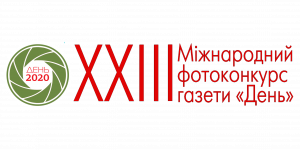Before last weekend Kyiv’s Ukrainian Folk Decorative Art Museum hosted the first spring masni (lit. “fat”) vechornytsi soirees rich in food and drink pending Lent. Oleh Skrypka has been organizing these get-togethers as part of the ethnic festival Krayina mriy (Dreamland). “The deeper I delve in our folk rites, the greater I admire them,” says the BB rock group leader. “Knowledge of tradition gives me a firmer foothold.” The site of this get-together is also special. For just one night masterpieces including blown glass carafes, pitchers, sugar bowls, ceramic ornaments done by the inimitable Maria Pryimachenko; rugs, tapestries, and folk costumes that served as stage props and wardrobe for dramatized scenes from Ukrainian folk life, as part of the old rite of welcoming spring, along with the koliady spring carols symbolizing women’s fertility and families with many happy children, reigned supreme. “I am happily impressed by the fact that this vechornytsi celebration was allowed to be held on the premises of one the best Ukrainian museums,” says Ivan Malkovych, poet and publisher, adding, “One finds unique items on display here that make you feel part of those singular Ukrainian folkways.” Says Adriana Vialets, the museum curator: “I am outraged whenever I hear museums being referred to as places of ‘captured time,’ with their stands collecting dust dating back hundreds of years.”
“In actuality, this is a modern structure, the functioning of which must be aimed at keeping pace with modern life and keeping aware of the needs of our society.”
Even though the number of people attending these vechornytsi celebrations keeps growing, quite a number of the visitors have become regular guests, patrons, with whom you shake hands and treat them as family members. On that particular occasion I spotted the artist, Petro Honchar. He smiled at me and I smiled back. “You will kiss the crucifix and recite the Lord’s Prayer.” The ritual every visitor has to perform to be admitted, although other tricky questions are in order like “Are you married?” If you reply in the negative a block of wood is affixed to your leg. Once matters like love were not supposed to be the prerogative of only two. Happy marriages had a tangible effect on the local village community, its viability, birth rate, and so on. To shame young men and women who had failed to get married before Lent, they had a kolodka wood block affixed to the leg and had to drag it along. Here, as in many other cases, one could “pay” his way out by giving money or reciting poems, singing carols or performing dances. In my case I couldn’t think of any poems or songs, so I had to pay a sum in hryvnias....
Andrei Okara, Russian political scientist of Ukrainian descent, often visits Kyiv and says that there is more respect in Ukraine for ethnic culture than in Russia. He believes the reason is that the Ukrainian tradition is stronger; on the other hand, Russia is more urbanized. “Ukrainian tradition is more than a fashion focusing on ethnic decor,” he says, “it is part of a postindustrial society and postmodern culture, yet it retains its sacral nature.”







